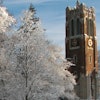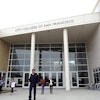Over the past three decades, U.S. academic employment has dramatically shifted from mostly full-time tenured or tenure-track faculty to mostly contingent positions.
That's according to a new report from the American Association of University Professors (AAUP)which provides data depicting the shift away from tenure to contingent faculty at most U.S. colleges and universities. Utilizing data from the National Center for Education Statistics on patterns of faculty appointments and graduate student employment, AAUP makes clear that there is an ever-increasing reliance on contingent faculty.
Long-standing AAUP policies recognize three types of full-time faculty appointments: tenured, tenure-track and non-tenure track (special appointments). The report notes that U.S. colleges and universities have increasingly relied on faculty holding contingent appointments ineligible for tenure, including those with renewable contracts (full-time). There are also adjunct faculty, who are part-time or temporary. Dr. Taylor Odle
Dr. Taylor Odle
In fall 1987, only about 33% of faculty members at U.S. colleges and universities were employed part-time. That number rose to 48% as of fall 2021. As of fall 2021, 68% of faculty held contingent appointments, compared to 47% in 1987. Only about 24% of faculty held full-time tenured appointments as of fall 2021, versus 39% in 1987. Women and underrepresented minorities held part-time appointments in greater proportions than men and non-underrepresented minorities. Also, the number of graduate student employees increased 44% from fall 2002 to fall 2021.
The report’s author, Glenn Colby, AAUP senior researcher, said it’s the most common question he receives.
“People want to know, how many faculty have tenure or how many are contingent,” he said.




















